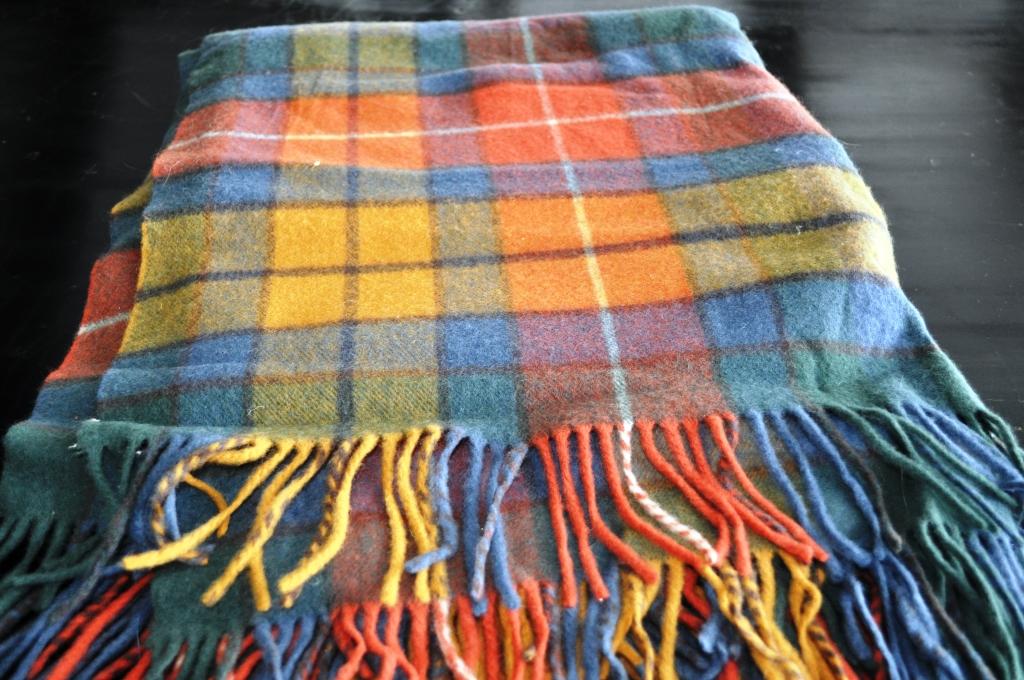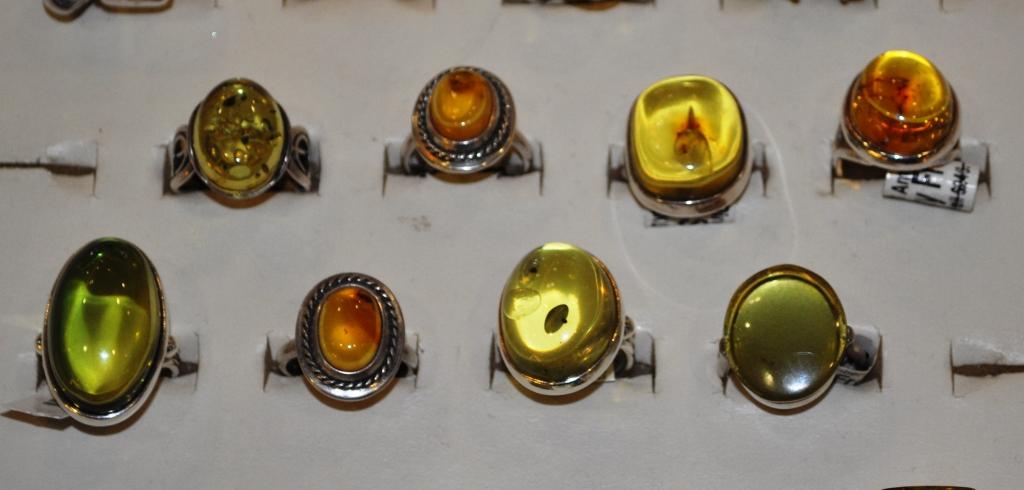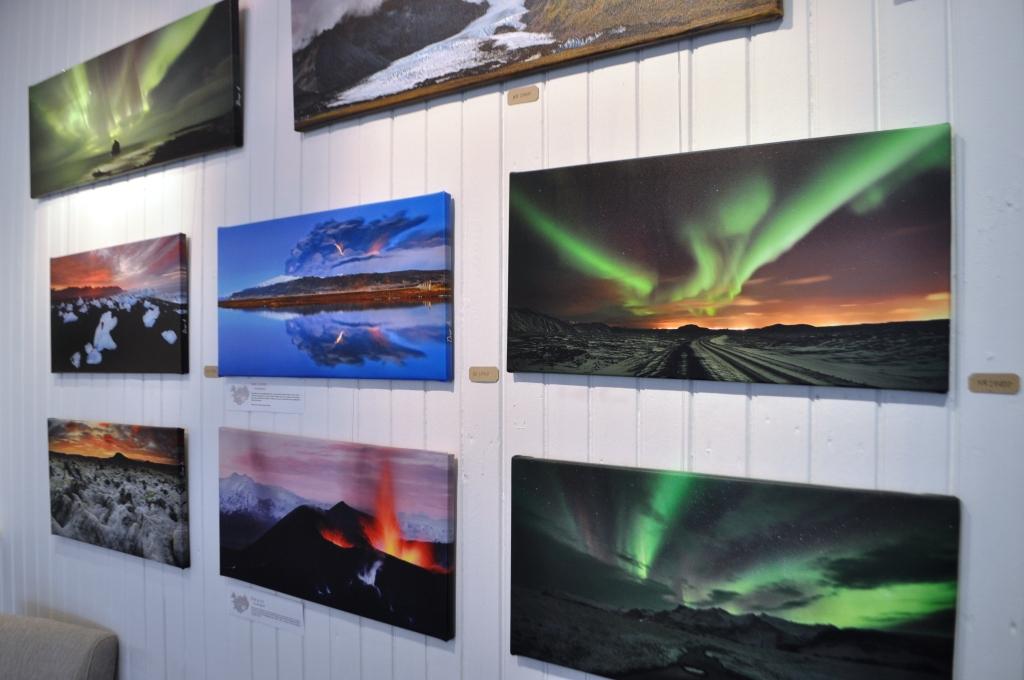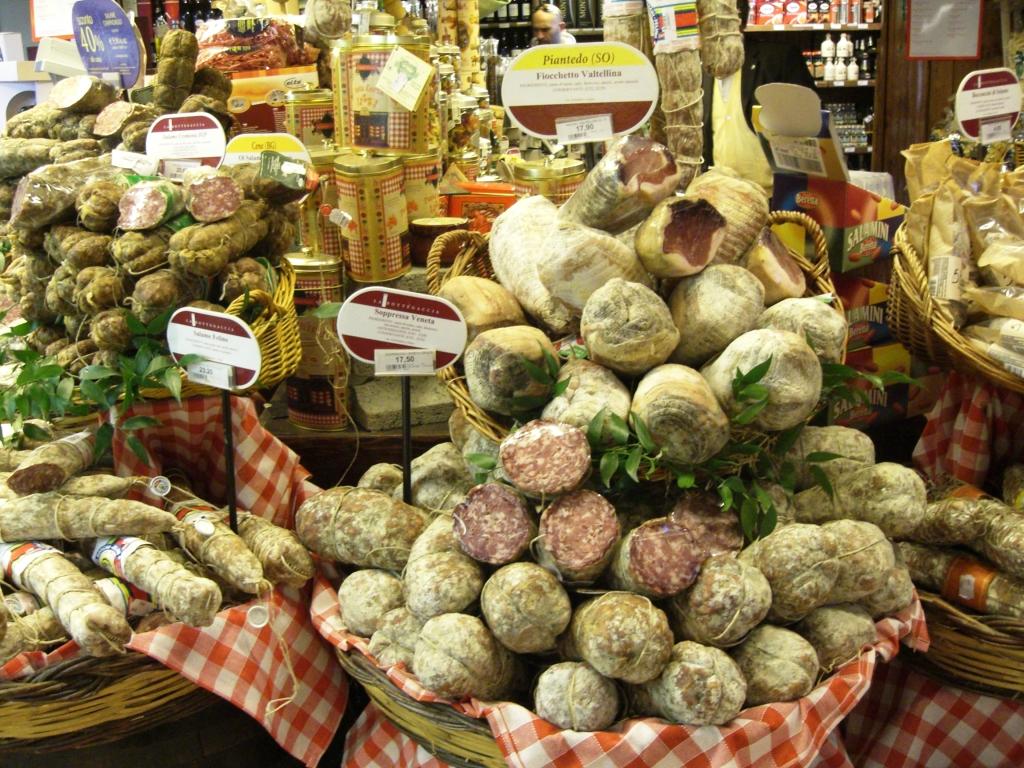If I had wanted to bring home a true memento of my month in Scotland, I’d have found a way to bring home midges and rain. But given the difficulties of importing insects into the U.S. — not to mention weather — I settled on souvenirs that painted a rather sunnier picture than I’d actually experienced on a challenging coast-to-coast hike.
In Your Bucket Because…
- Scottish woolens are world famous.
- Where else are you going to buy a bagpipe — and some whisky that’ll make you brave enough to play it?
- Good for: lovers of tweeds and tartans, plus anyone with a drop of Scottish blood.
Shopping for Scottish Woolens: Cashmere, Lambswool, Tweed, and Tartan
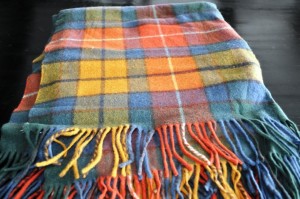
The Scottish woolens industry, with its high-quality cashmere, lambswool, tweeds, and tartans, is up to the task of coping with the cold, wet Scotland weather. To my mind, a lot of traditional Scots plaids look a bit like Catholic school uniforms, with their somber criss-crosses of dark blues, reds, and greens. Fortunately, there are also plenty of hip contemporary designs.
Still, traditional family tartans do a brisk business even with American tourists, especially those with a drop or two of Scottish blood. (They seem to abandon the American anti-aristocratic stance the minute they learn that they might be related to an important Scots clan.) Each clan has its own pattern: To track down your family’s tartan, there’s an official Scottish Tartans Authority to keep everything registered and recorded.
As I’m unencumbered by Scottish genealogy, I got to choose based on taste, and scored a lovely shawl in autumnal shades ranging from gold to deep red, with a bit of blue thrown in.
Most non-Scottish men wouldn’t dare wear a kilt, but if you’re up for the challenge, this is the place to get decked out. Girls and women will find clothing that can actually be worn once they get home — sweaters, gloves, hats, scarves, jackets, socks, kilts, and wraps, as well as blankets. Sweaters range from thick and ropy fisherman’s sweaters to cozy lambswool and slinky cashmere. Hand-knitted sweaters are available at craft markets throughout the county, as are tanned sheepskin hides, which can be thrown over sofas or chairs.
In clothing, children’s styles and sizes are available, and knitwear and kilts make lovely gifts for friends who have children. With the current exchange rate of dollars to pounds, prices for North Americans are not cheap, but they are still less expensive than they would be at home, especially if you look at cashmere blends.
Note that, as in so many countries, cheap imports have infiltrated the tourist trade. Ask about the provenance of the wools you are buying, especially in markets that also have T-shirts, beer mugs, and other typical tourist trinkets. Some made-in-Scotland names for fine cashmere include Pringle, N. Peal, and Hodgson.
Scottish Golf Souvenirs
The Scots invented golf, so its no surprise that golf destinations such as St. Andrews are filled with stores selling all manner of golf souvenirs from St. Andrews-imprinted gold ball markers to hand-made golf clubs to gold club covers to golf hats (available in a tartan).
Of course for a golfer, the best souvenir may be a photo of you, teeing up on one of the iconic Scottish golf courses.
Buying Scottish Food and Whisky
The Scots invented Scotch (whisky, that is, no “e”). Single malts include brands with names like Cragganmore, Dalwhinnie, Glenkinchie, Lagavulin, Pittyvaich, Auchroisk, and Teaninich (to name just a few). Blends, are, as you would guess, combinations. You can taste test both in distillery tours, which give insight into the traditional methods of making Scotch and the differences among brands. While you’re sampling, snag a bottle or two for a fraction of the price you’d pay at home.
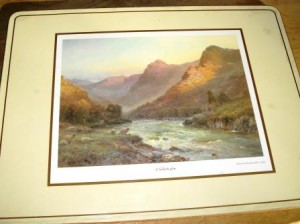
For food, check out the food courts at the major department stores such as Jenners or Marks & Spencer. Bitter orange marmalade, Scottish shortbread, and your choice of chutneys make tasty nice gifts. Or, if you are adventuresome, you can pick up the much-maligned Scots specialty, haggis, which even comes in a canned (and hence transportable) incarnation. As in England, you’ll also find a the traditional cork-backed placemats: I bought a set with pictures of the Scottish Highlands imprinted on them.
More Souvenirs with Traditional Scottish Themes
A few more traditional items should round out your Scottish shopping expedition:
- Scottish Jewelry: Today’s Celtic jewelry leans heavily on traditional themes, including the Gaelic cross, pagan or Nordic symbols such as dragons, and geometric patterns. Traditional Scottish themes include the Luckenboot, which is a pair of entwined hearts topped by a crown (expressing the desire for an independent country), clan symbols, and Highland thistles. These patterns can be found on just about any kind of jewelry: necklaces, tie tacks, cuff-links, earrings, rings, brooches, kilt pins, and watches.
- Family Crest: If your family tree includes a few drops of Scottish blood, you may be able to find a family crest or coat of arms — or at least a T-shirt or a mug with the family name on it. Who knows? You may find that your family is represented by a rampart lion, or learn that you are related to Mary Queen of Scots — in which case, something with a royal coat of arms may be in order.
- Bagpipes. Bagpipes are traditional in Scotland A full-sized set of pipes is not souvenir material; it’s a full fledged instrument, not to mention big, heavy, hard to play, and expensive. But tourist shops sell child-sized bagpipes that actually produce a remarkably good sound and give kids (or adults with childen’s hearts) a sense of what the instrument is all about.
Practicalities
So where to find all these wonderful items? Finding a place to shop for souvenirs in Scotland is no problem at all:
- Glasgow has a reputation second only to London in the U.K. for shopping.
- Edinburgh has more stores selling souvenir-grade bagpipes, woolens, tweets, and plaids than you will be able to visit in a single visit, many of them lined up on the Royal Mile, which leads down from the Edinburgh Castle.
- For woolens, if you’ll be visiting the countryside and staying in towns near mills, you’ll be able to pick up knitwear at even lower prices. If you’re on a budget, check out items marked “seconds.” Chances are, you won’t even be able to tell the difference.
